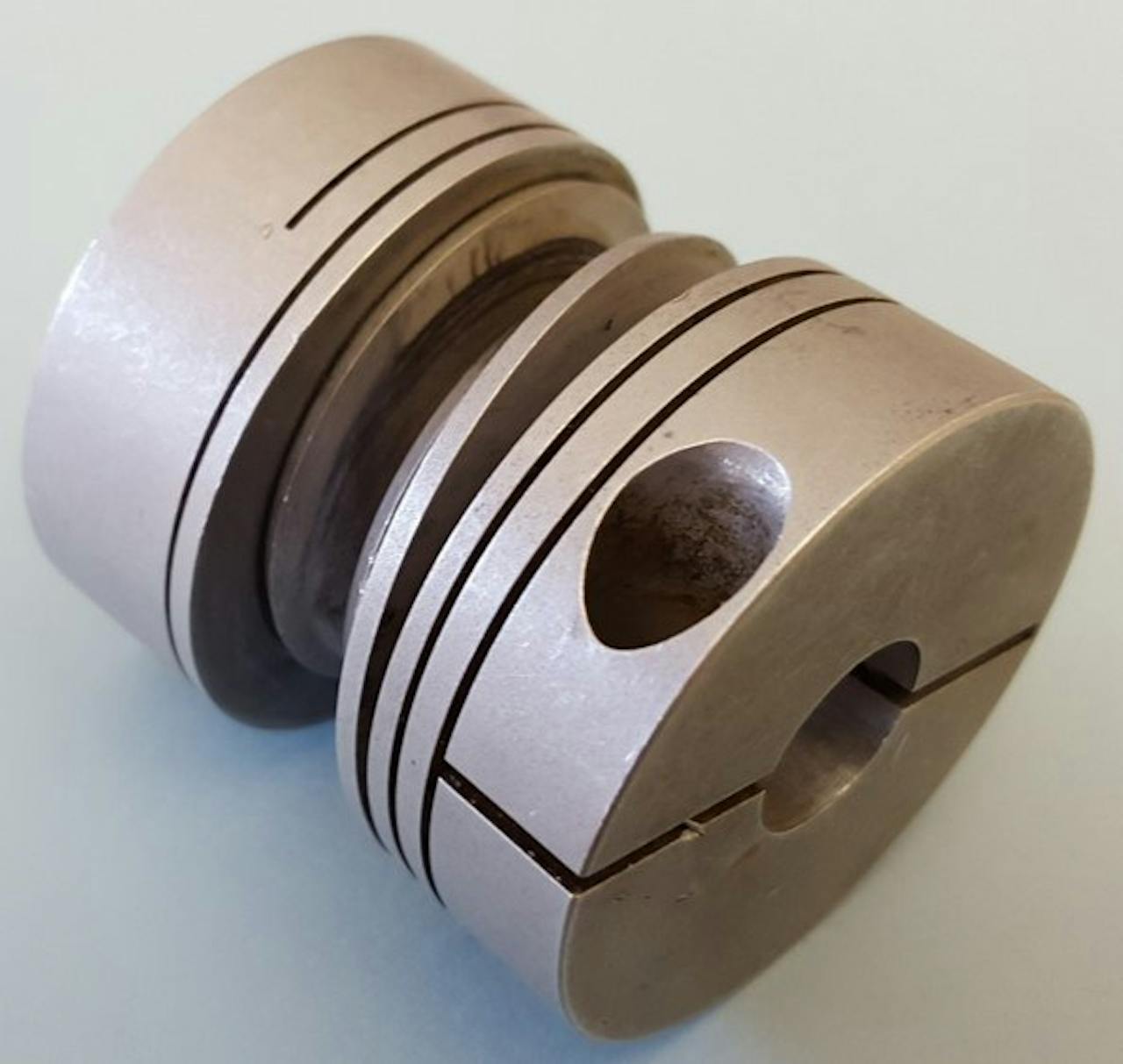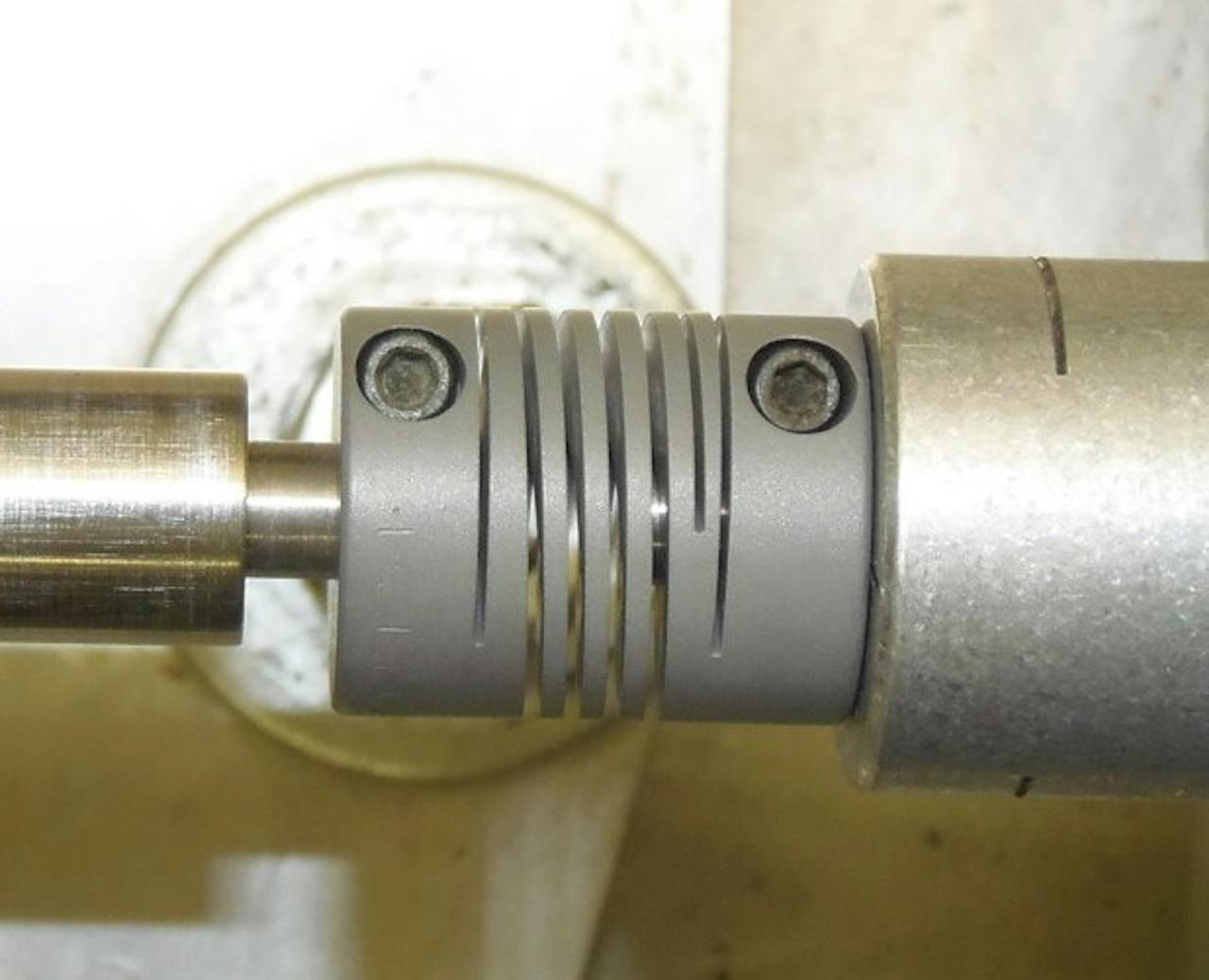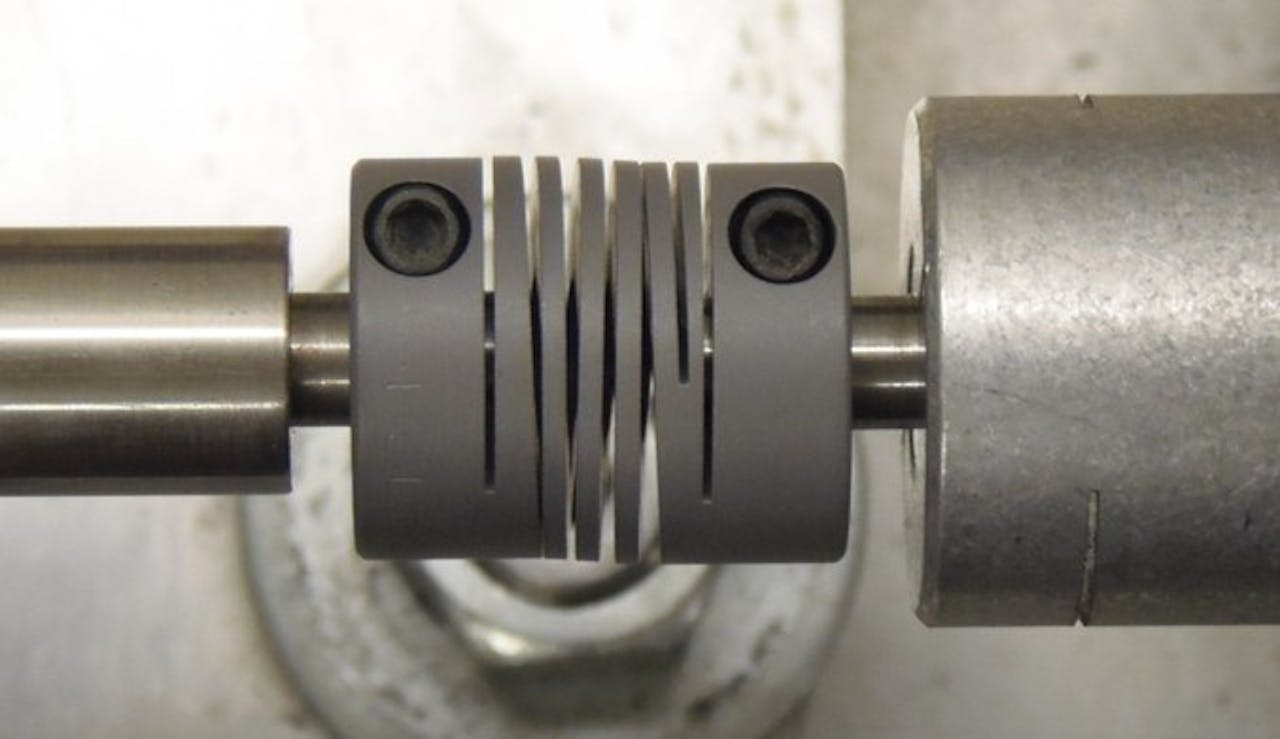7 Tips for Coupling Selection
You may not always find the "perfect" coupling for your motion system, but when it comes time to select a coupling that will best suit your needs, keep these 7 tips in mind to help find the best solution possible.
7 Tips for Coupling Selection
You may not always find the "perfect" coupling for your motion system, but when it comes time to select a coupling that will best suit your needs, keep these 7 tips in mind to help find the best solution possible.
1. Inertia
Consider the inertia of your system.
The inertial mass of the rotating system has a significant impact on the demands put on your coupling. Both the rate of acceleration and rate of deceleration needs to be factored in. Sudden braking of a high-speed or high-inertia system can cause a large torque spike to pass through the coupling resulting in its damage.

2. Axial Motion
Consider operating conditions that may cause thermal expansion.
While a machine is running it may be heating up and cooling down or operating at an elevated temperature. When this happens, there can actually be some relative movement between the shafts that had not been considered previously. The reason this is important is that not all coupling solutions are capable of axial compliance, and are considered axially rigid. The risk in this situation is the possibility of putting a large axial load onto the bearings of the motor. The same motor loading can be true with thrust loads.
In a motion control system, there can be loading of the motor bearing if a solid coupling is used and transmits axial loads to the motor before engaging thrust bearings.

3. Parallel Offset
Consider the speed rating of couplings with large parallel offset.
Parallel offset is a more difficult misalignment to accommodate than angular misalignment. Couplings generally do a good job at .010 inches and below (parallel offset). Once you start hitting .020 inches or more of offset, you're going to have a harder time finding a coupling that's going to fit in a relatively compact package. If you find a coupling that has a large parallel offset capability be sure and check its speed rating. Usually when a coupling can handle a large parallel offset the product is limited in its maximum RPM rating.

4. Attachment Types
Consider the best attachment type for your application.
When you鈥檙e looking at your application, there are several attachments available with the different types of flexible couplings. Some of the most common attachments and their respective benefits are list below.
- Set Screws
- System designers often consider set screws because they are relatively low cost. The problem with a set screw attachment is it will often leave a burr on the shaft which can cause problems when removing the coupling. If using a set screw attachment make sure the set screws are located over the flat of a shaft. It is not recommended to use a set screw attachment in motion control type applications because when the loads are reversing, the set screw will actually loosen up. Adding a keyway to a set screw attachment will help compensate for the set screw loosening up and provide a positive connection.
- Clamp
- Clamps are a common way for attaching a shaft to the coupling and the clamp can be machined as part of the coupling in a removable cap configuration. This method is best for reversing applications such a motion control systems and where quick and easy installation and removal are desired.
- Custom Attachments
- The variety of custom attachments available is limited only by the imagination of the design engineer and the laws of physics. Attachments can be as simple as a plain bore or as complex as a spline. Just because a coupling may become a custom coupling, doesn't mean the cost is more expensive. Custom products can actually reduce the cost of an assembly when the associated expense of purchasing & assembling numerous components can be machined into one easy-to-use part.
5. Environment
Consider the environmental conditions your application is operating in.
Keep in mind if the coupling is operating in a harsh environment and/or corrosive atmosphere. Different materials will need to be considered depending on the type of environment. In a severely corrosive environment, specialty materials such as MP35N or Titanium may be the best option. Another environmental consideration is temperature. Certain alloys lose significant strength at elevated temperatures, or for certain elastomeric type couplings, the temperature limits may be limited. In higher temperature applications Inconel may be the material of choice. If the coupling is used in food or medical environments then the material options might be limited to certain stainless steel or Titanium.
6. RPM
Consider how balanced the coupling is for the RPM.Think about speed, RPM.
Many applications are relatively easy to solve with most couplings if you鈥檙e operating at 5,000-10,000 RPM. In today鈥檚 high-speed applications it may be possible to reach 25,000 RPM, and sometimes up into 75,000-80,000 RPM. You鈥檒l need to factor in not just torque capacity but how well balanced is the coupling for that type of speed because if it鈥檚 not either a balanced coupling or design that鈥檚 symmetrical by nature, which makes it a statically balanced part, you鈥檙e going to be running into a vibration situation due to the imbalance.
7. Performance Rating
Consider how each manufacturer rates their couplings.
When looking for your best coupling solution, remember there is no governing body for couplings and how their performance is rated. It could be from calculations or the results of testing by the manufacturer. Make sure that you read the data carefully because one manufacturer may have a torque rating and when you look at the footnotes, their torque rating is for static torque which means it鈥檚 the torque that will yield the coupling versus another company that uses a dynamic torque, where the rating based upon a high-cycle environment. We actually de-rate the coupling torque capacity based upon realizing that they鈥檙e going to be going through millions and millions of revolutions.